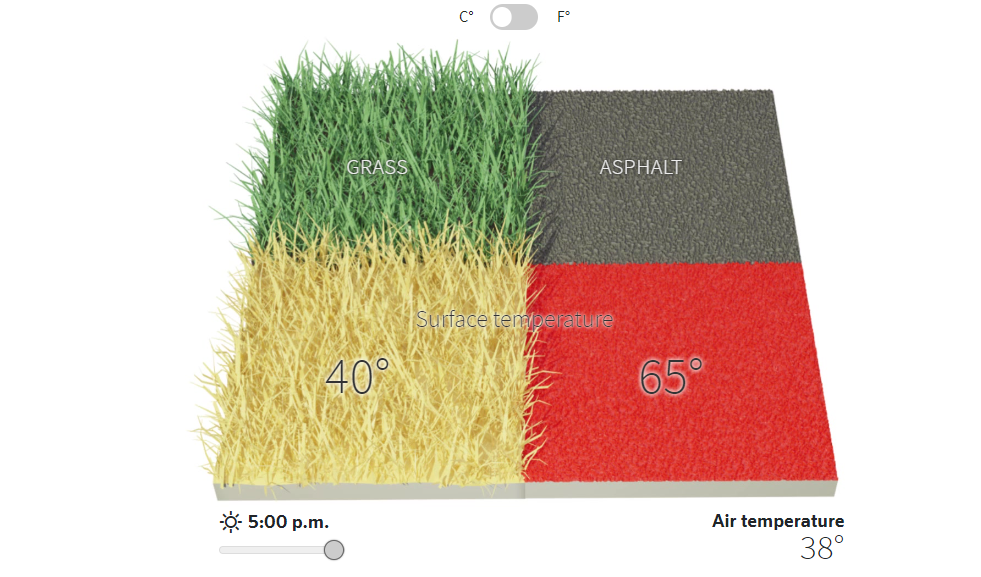It only takes just a fraction of a second to suffer a pretty serious burn. Asphalt and concrete in direct sunlight can often reach surface temperatures as high as 82 Celsius (180 Fahrenheit) on the hottest days, said Dr. Kevin Foster, who directs the Arizona Burn Center in Phoenix.
Forecasters predict another heat wave in Phoenix this week after the U.S. National Weather Service declared the city had sweltered under high temperatures above 43°C (115°F) for 30 consecutive days in July. Across Europe, high temperature records have tumbled this summer and major heat waves in much of the world are expected to persist through August.
Due to the elevated temperatures in Phoenix, doctors have treated numerous patients who suffered burns from falling on the ground or touching surfaces that were much hotter than the recorded air temperature.
Surface temperatures play a critical role in how hot the surrounding area gets and also present a health risk during extreme heat events.
During heat waves, a substantial amount of the sun’s energy is absorbed and reflected by surfaces exposed to its rays, leading to their temperatures increasing significantly. These warm surfaces then transfer their heat to the surrounding air, increasing the overall air temperature. While some permeable and moist surfaces, like grass or soil, absorb less heat, other construction materials like asphalt or concrete are capable of absorbing as much as 95% of the sun’s energy, which is then radiated back into the surrounding atmosphere.
Read more at Reuters


Leave a Reply